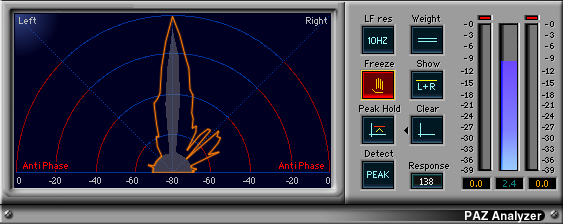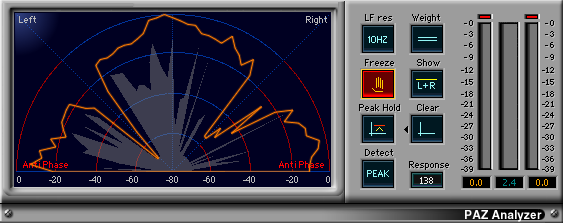Yes, trust you ears but refer to these tools as much as possible.
If in doubt, try doing some testing yourself: take to a car, headphones, poor quality "media desktop speakers" mashed up in the corner of the desk and see how they translate.
And more important of all: mono compatibility! BBC still won't allow stuff that is not mono compatible to be played (guess they are still afraid of those folks with a pre 1900's tv or radio set which is mono AND are paying for the TV/Radio license :P)
Don't forget if your track is supposed to play in lounges, clubs, etc chances are they'll be either downmixed to mono and matrixed or just plain separated throughout the venue. You REALLY don't want your side guitars to disappear or worse - your vocals!
To be honest I don't use PAZ much I tend to use the DK audio hardware designed for G+ consoles BUT that second one of yours seems WAY to narrow and your first one tilted to the right, with a lot of -phased material.
This is what I mean about "don't use PAZ" (as in, I'm not used to interpret the data as shown) and use your ears/do some testing: "It is a bit tricky to define when a signal is shown by the Stereo Position Display or heard by the ears as “out-of-phase”. This is not simply when the left and right channels happen to have opposite polarity at any given instant. Such a situation can happen if independent instruments are panned to different stereo positions, and it just happens, statistically, that the signal of each channel has opposite polarities. The meter will show a quick spike in the antiphase area. This can also happen if a stereo delay or reverb is applied to an instrument and the delays arrive to each channel at different time" (from WAVES PAZ manual) very true but such a weird language used









